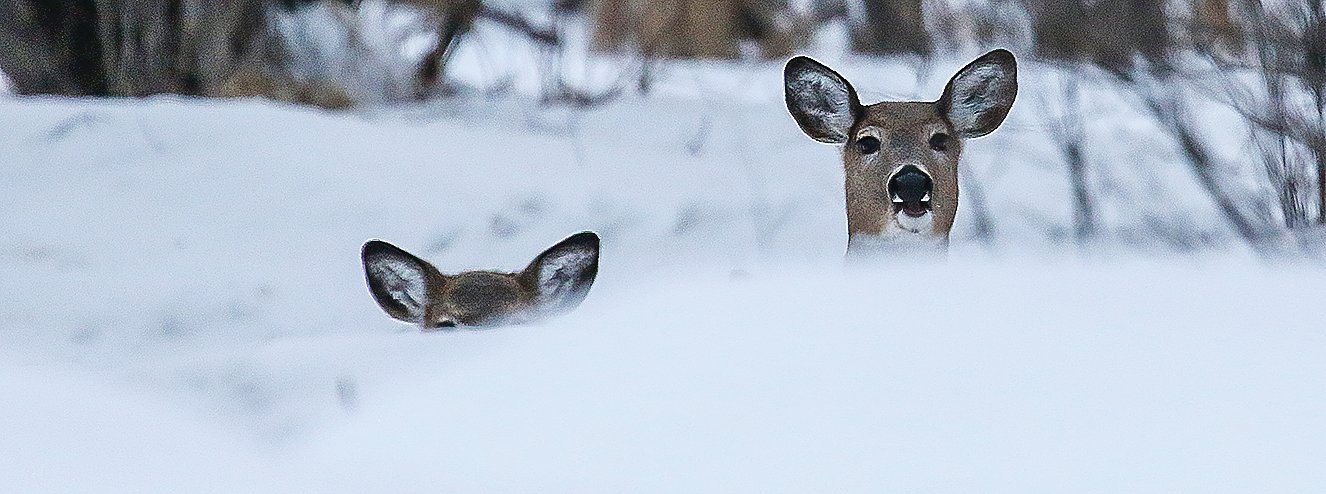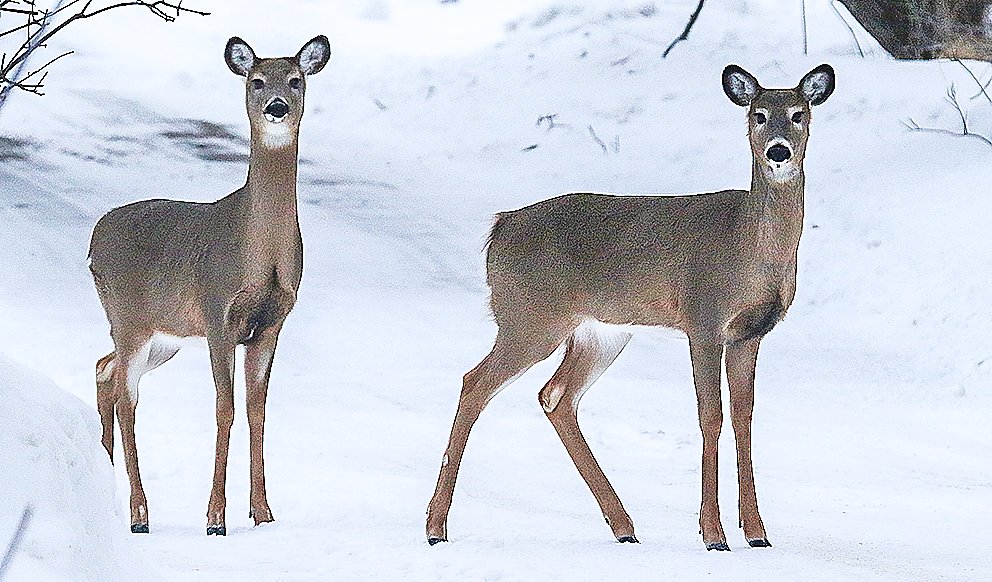Support the Timberjay by making a donation.
Tough weeks still ahead for whitetails
Trend toward greater snowfall poses challenges
REGIONAL—The longer days of late February are a reminder that spring is at least somewhere out on the horizon, yet it’s often the toughest time of year for wildlife like whitetail deer. …
This item is available in full to subscribers.
Attention subscribers
To continue reading, you will need to either log in to your subscriber account, or purchase a new subscription.
If you are a current print subscriber, you can set up a free website account and connect your subscription to it by clicking here.
If you are a digital subscriber with an active, online-only subscription then you already have an account here. Just reset your password if you've not yet logged in to your account on this new site.
Otherwise, click here to view your options for subscribing.
Please log in to continue |
Tough weeks still ahead for whitetails
Trend toward greater snowfall poses challenges
REGIONAL—The longer days of late February are a reminder that spring is at least somewhere out on the horizon, yet it’s often the toughest time of year for wildlife like whitetail deer.
It’s been a remarkably mild winter in terms of temperature, but a combination of factors are undoubtedly stressing deer more this winter than the usual measures might indicate.
For most wildlife in winter, it’s a question of generating the energy needed to survive. That means access to enough food to generate the heat warm-blooded bodies require to resist the cold of winter.
For whitetail deer, deep snow is typically the biggest challenge for winter survival here in the North Country, according to Jessica Holmes, Tower Area DNR wildlife manager. “They need to expend so much more energy when trudging through deeper snow depths,” said Holmes.
While snow depths tend to pile up gradually over the course of a North Country winter, that wasn’t the case this year when a major storm hit the area in mid-December, leaving 12-20 inches of heavy, dense snow across the region. That was on top of the several inches of snow that had been on the ground since the region’s first major snowfall on Nov. 11.
That pushed snow depths across the area above 15 inches, the threshold for adding to the DNR’s winter severity index, or WSI. The index is a cumulative measure of days with temperatures of zero or below and snow depths of 15 inches or more. In a typical North Country winter, the index tops out at around 100, with the bulk of the points for temperature. Such conditions routinely lead to at least some winter mortality for whitetails, but the mortality level rises significantly in winters when the index hits 120 or above.
Through mid-February, the index was sitting at anywhere from the low 50s to the 90s across the region, although the past week likely added at least ten more points to the index. With potentially several weeks of continued deep snow and seasonably cold temperatures, the winter is likely to finish up in the moderate-to-severe category depending on location.
But this may well be a year when the WSI reading fails to fully reflect the unique challenges the weather has posed for deer this winter.
DNR biologists have long recognized that WSI points added for snow depth are tougher ones for deer than below zero temperatures. As long as deer are able to access food they can generally weather just about any temperature a northern Minnesota winter can throw at them. So, a winter when the bulk of the index points accumulate due to snow depth, as has been the case this season, it’s actually tougher on deer than might otherwise be expected.
A challenging situation was made worse, notes Holmes, by the heavy rain and thawing temperatures that hit the region last week, significantly altering snow conditions— and not to the benefit of deer. Biologists have long recognized that the crust that typically forms on the snow in northern Minnesota in late March or April is a particularly difficult time for deer. Their pointed hooves will break through most crusts, which impedes their ability to travel for food. It also leaves them exceptionally vulnerable to predators, like wolves, which are more frequently able to travel on the crust.
In a typical year, deer may have to weather two or three weeks of such conditions, but the rare mid-February thaw and rain has created crusted conditions that could linger for the next two months and will only be made worse with the several inches of fresh snow that’s fallen since.
“What’s going to happen in the next several weeks, that’s the golden ticket,” said Holmes. “The wolves will start running on top, so the potential for surplus killing is there.”
A signal of climate change?
For years, conventional wisdom suggested that warmer winters brought on by climate change would be beneficial for area whitetail deer, a species that has long been on the northern fringe of its range here in northern Minnesota. But, while the climate is clearly changing, not all of those changes are necessarily helpful to whitetails.
A 2020 analysis of northcentral Minnesota climate trends by a U.S. Forest Service researcher confirms that winters have warmed significantly in recent decades, which is helpful to whitetail deer. Yet, snowfall has been on the rise as well, at least in the past decade, as milder air is able to hold more water vapor and helps lead to deeper snowfalls than was the norm in the recent past. “The years 2013, 2016, 2018, and 2019 all fall within the top 15 years for total annual snowfall,” according to Daniel Roman, the Forest Service researcher who helped compile the weather data. “The record for total annual snowfall is 2013, with 109.5 inches.” Despite the warming temperatures, northern Minnesota remains sufficiently cold to maintain, rather than melt, snow for several months at a time. As more snow falls, the duration of deep snow has been increasing and that appears to be limiting deer survival in the winter. All of which may be one reason that the whitetail deer herd has struggled to recover from losses suffered in some recent winters, despite warming temperatures.
Winter protection key
DNR biologists say the trend toward greater amounts of snow is coming at the same time that DNR policy changes that have shortened rotation ages for most timber— a move that tends to decrease the amount of dense conifer understory that deer frequent in winter. Snow depth is often considerably less under a dense stand of conifers, making it easier for deer to move around. “These snow shelter areas are so important,” said Holmes. “It’s a place where they can rest and not expend so much energy to move around.”
Recent winters have definitely challenged the region’s whitetails, and it’s been seen in the drop in harvest numbers in recent years. Wildlife managers fear that without a change in the weather or an increase in the amount of winter cover, any recovery in the whitetail deer population could be painfully slow.









